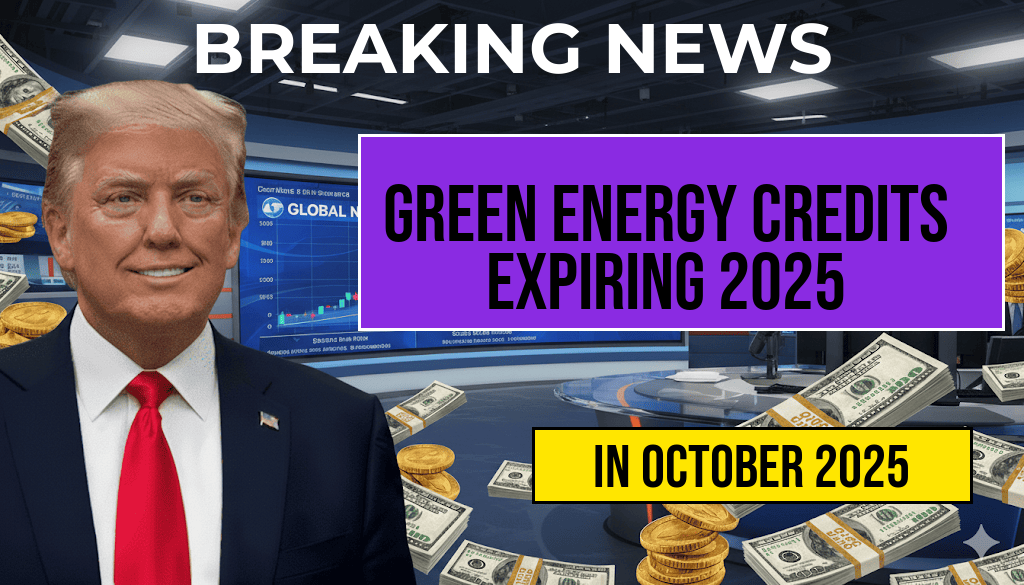As the renewable energy landscape shifts, homeowners utilizing green energy credits are facing a pivotal deadline. The federal government’s residential tax incentives for renewable energy projects, including solar panels, wind systems, and energy storage, are set to expire or phase out for many participants starting in 2025. This shift could significantly impact the financial viability of residential renewable installations, prompting homeowners and industry stakeholders to review their options. With the expiration approaching, understanding the specifics of these credits, how they influence tax savings, and what alternative incentives remain available is crucial for those considering or currently investing in green energy upgrades.
Understanding the Current Landscape of Residential Green Energy Credits
The primary federal incentive for residential renewable energy improvements has long been the Investment Tax Credit (ITC), which offers a percentage deduction from federal taxes based on the cost of qualifying renewable energy installations. Originally enacted as part of broader energy policy initiatives, the ITC has played a central role in encouraging adoption of solar and wind systems in American homes.
As of 2023, the ITC provides a 30% tax credit for systems installed on residential properties. However, this rate is scheduled to decline in the coming years: the credit drops to 26% in 2024 and further reduces to 22% in 2025 for most systems. After 2025, unless extended or modified by legislation, the residential ITC is expected to revert to a much lower rate or be phased out entirely for new installations. This upcoming reduction has prompted many homeowners and industry analysts to evaluate the timing of their renewable projects.
Implications of the 2025 Expiration
Financial Impact on Homeowners
- Reduced savings: Homeowners who postpone installations past 2025 may see their tax credits decrease by nearly half, potentially making projects less financially attractive.
- Increased project costs: Without the current level of incentives, the net cost of installing solar panels or energy storage systems will rise, possibly deterring some prospective buyers.
- Market volatility: Anticipation of the expiration has already caused a surge in installations earlier in 2024, but demand could slow as the deadline nears or passes.
Policy and Legislative Context
While the federal incentives are set to decline, some states and local governments continue to offer their own rebates and tax credits. For example, California’s Self-Generation Incentive Program (SGIP) provides additional rebates for energy storage, and New York offers property tax abatements for renewable systems. Still, these vary widely by location and often have limited funding or eligibility criteria.
Alternatives and Future Outlook for Residential Incentives
State-Level Incentives and Other Programs
| State | Program Name | Type of Incentive | Notes |
|---|---|---|---|
| California | SGIP | Rebate | Energy storage systems |
| New York | Property Tax Abatement | Tax reduction | Up to 15% reduction for solar systems |
| Texas | Texas Solar Incentives | Rebates & Tax Credits | Varies by utility and locality |
Legislative Developments
Proposals to extend or enhance federal incentives are ongoing. For example, the Build Back Better Act and other legislative efforts have sought to prolong or expand renewable tax credits. Advocacy groups and industry representatives continue to lobby for extensions to maintain the momentum of residential solar adoption.
Strategies for Homeowners Considering Renewable Upgrades
- Early installation: Homeowners planning to add solar or energy storage should consider completing installations before the credits decrease in 2025.
- Maximize current incentives: Consult with certified installers to ensure projects qualify for the maximum available credits and rebates.
- Explore local programs: Investigate state and utility incentives that can supplement federal credits and offset costs further.
- Stay informed about legislative changes: Policy shifts could alter available incentives, making ongoing research essential for planning.
As renewable energy incentives evolve, homeowners must weigh the timing of their investments carefully. While the impending expiration of federal credits in 2025 presents challenges, a combination of local incentives, potential legislative updates, and strategic planning can help mitigate costs and maximize benefits.
For more detailed information on federal and state renewable energy incentives, refer to resources like the Department of Energy’s Energy Saver and [Wikipedia’s page on the Investment Tax Credit](https://en.wikipedia.org/wiki/Investment_Tax_Credit).
Frequently Asked Questions
What are Green Energy Credits and how do they benefit homeowners?
Green Energy Credits are incentives provided by the government to encourage the adoption of renewable energy systems. For homeowners, these credits can significantly reduce the upfront costs of installing solar panels, wind turbines, or other sustainable energy solutions, making it more affordable to switch to renewable energy.
Why are Green Energy Credits expiring in 2025?
The expiration of Green Energy Credits in 2025 is part of the scheduled phase-out plan set by policymakers, aiming to transition towards a more sustainable energy economy. After this date, new installations may no longer qualify for the same level of tax incentives, so homeowners are encouraged to act before the deadline.
How can I determine if my residential energy system qualifies for tax incentives?
Eligibility for tax incentives depends on factors such as the type of renewable energy system installed, the installation date, and compliance with specific standards. It’s advisable to consult with a certified solar installer or tax professional to verify if your system qualifies for current Green Energy Credits.
What steps should I take to maximize benefits before the credits expire?
To maximize your benefits, consider scheduling your renewable energy system installation before the 2025 deadline. Additionally, gather all necessary documentation, stay updated on policy changes, and consult with experts to ensure you meet all requirements for tax incentives.
Are there alternative incentives available if I miss the 2025 credit deadline?
Yes, some states and local governments may offer alternative incentives or rebates for renewable energy projects. It’s important to research regional programs and consult with local agencies or renewable energy professionals to explore other financial support options available after the credits expire.

Leave a Reply